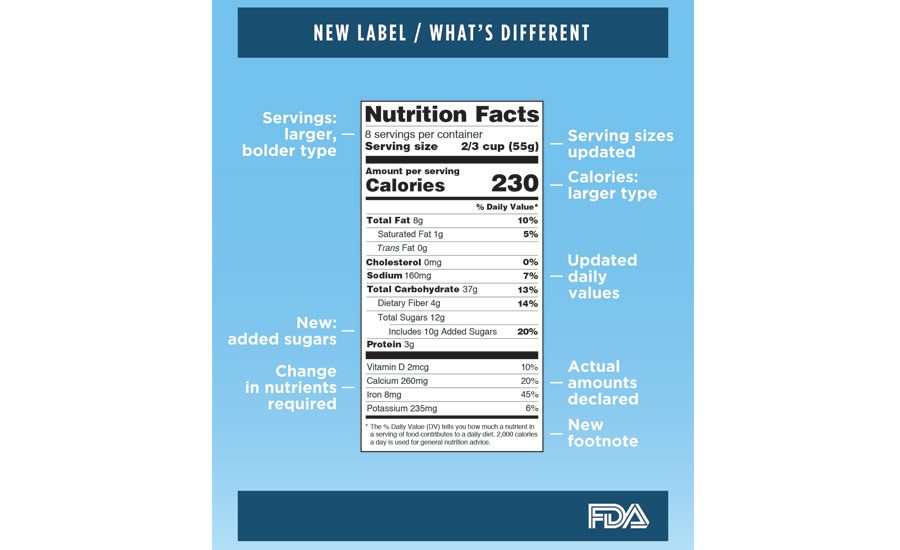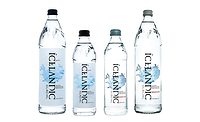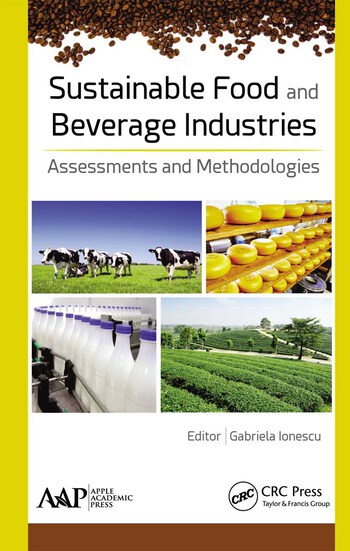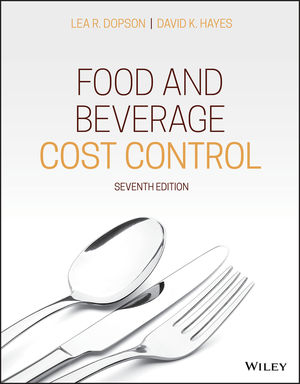Dietary guidelines, label highlight added sugars
Beverage companies utilizing natural sweeteners prior to regulations




With the release of the 2015-2020 Dietary Guidelines for Americans earlier this year followed by the U.S. Food and Drug Administration’s new Nutrition Facts label, many changes are instore for consumer packaged goods (CPG) manufacturers. Among those changes, mainstream media has given its share of attention to one ingredient category: sugar.
The new guidelines suggest that consumers should receive only 10 percent of their daily calories from added sugars. They also note that Americans currently consume almost 270 calories, or more than 13 percent of their calories, from added sugars.
Shasha Yu, marketing director for Sweet Green Fields Co. Ltd., Bellingham, Wash., explains that although the beverage market likely will be impacted by this guideline, it already has responded to this dietary evolution.
“[B]everage accounts for almost half of [the] added sugar [that] the U.S. population consumes,” she says. “Reducing the consumption of sugar-sweetened beverages is recommended. [A] recent consumer trend in the beverage market is in line with the Dietary Guidelines: the sales of traditional carbonated soft drinks have been declining and customers have favored juices, flavored waters and other beverages that contain fewer calories [that] they deem healthier.
“More and more, beverage manufacturers are looking for natural sugar-replacement solutions to lower the calories,” Yu continues. “We can see the strong growth of drinks launched with no-added sugar, low-sugar or sugar-free claims in the market. For instance, 30 percent [of the] juice and juice-based drinks launched in the U.S. have one of these claims on the package, according to Innova.”
When the new Nutrition Facts label goes into effect July 26, 2018, a declaration of the grams and the percent of the daily value of added sugars will be present on food and beverage package labels. This change, as well as updates to serving sizes indicated on package labels, will have a profound impact on shoppers, experts note.
“Our consumer studies indicate that three in five U.S. shoppers are influenced by the sugar content of foods and beverages at the time of purchase,” says Afrouz Naeini, senior marketing manager of sweetness for Ingredion Inc., Westchester, Ill. “The changes to the nutrition facts label, particularly the ‘added sugars’ labeling and the changes in serving size are bringing more information to light as it relates to sugar.”
Naeini adds that prior to the release of the new guidelines and pending label changes, the ingredient supplier saw many brand owners addressing sugar reduction in their portfolios.
“We have already witnessed the momentum behind sugar-reduction projects,” Naeini says. “Companies are taking two approaches; some have aggressive sugar-reduction targets and plan to achieve sugar-reduction targets that can later be claimed on labels, and others are taking the gradual sugar-reduction approach to avoid a significant change in the taste and sensory experience of the product.”
Matt Drew, director of strategic marketing of beverage for Archer Daniels Midland (ADM), Decatur, Ill., notes that beverage-makers are considering many factors as they respond to this evolution of sweetener transparency.
“Brand owners are responding by exploring product strategies to balance taste, cost, calories and consumer perception of clean label,” he says.
To help in this transition, ADM is examining options that beverage manufacturers can invoke for new product development and reformulations.
Although CPG brands are preparing for any impact that could stem from the Nutrition Facts label change, what it could mean for their portfolios remains unknown, experts note.
“The impact of that remains to be seen, and our customers are trying to figure out what that looks like across their portfolio of brands,” says Andrew Ohmes, global product manager for Minneapolis-based Cargill. “There will be adjusting and adapting, and on the [research and development] (R&D) side, they’re very active [in] trying to reassess their brands and how they fit with those new guidelines and how they bring those to market. On top of that, you have the implications across a number of countries with sugar taxations, so from a government standpoint that’s having an influence on the product development decision process.
“I think the manufacturers realize that it’s all about choice,” he continues. “You’re going to have customers who want the full-calorie version, you’re going have ones that prefer a reduced-sugar version. Cargill can offer products to meet both of these needs. This is really building on the portfolio of choice for them to choose from, to maintain market share or even grow.”
Portfolio of options
Although the labeling and dietary changes will impact brands across the food and beverage spaces, many ingredient experts have been anticipating these changes and are prepared to assist brand owners in deciding their best course of action.
Luis Fernandez, vice president of global food technology at Tate & Lyle, Hoffman Estates, Ill., explains that tackling the added sugars trend will require myriad sweetener systems. “One single solution will not fit with everything, so we strongly believe in the complete total type of approach to really select the right ingredient from the portfolio in the right amount of time to fit within these guidelines,” he says. “We feel strongly; we were preparing for a while to get there.”
Because consumers have become more educated on reading labels and understanding information, there also has been an increase in removing artificial ingredients from food and beverage products, he adds.
“For us, Tate & Lyle, a global provider of solutions to our customers, we are completely aligned that this is the right of the consumer to help them understand what is in food formulations and we are engaged with our customers to deliver this,” Fernandez says.
Among the natural sweetener options that Tate & Lyle offers that could reduce calories and added sugars are Dolcia Prima allulose, PureFruit monk fruit extract and Tasteva stevia.
Ingredion’s Naeini also notes that there is no universal solution when replacing sugar. To aid in the search for solutions, Ingredion approaches creating sweetness as an experience.
“Our technical service and beverage application experts partner with our customers’ R&D teams and, in addition to supplying them with a wide portfolio of sweeteners and texturizing solutions, help them create the desired consumer eating or drinking experience by first translating that experience into scientific terms that can be formulated; and by then mapping that sweetness experience and recreating it using our DIAL-IN Sweetness and DIAL-IN Texture technologies,” Naeini says.
Cargill also highlights its portfolio of solutions for reducing calories, which also delivers on natural attributes.
In the polypol segment, the company offers its Zerose erythritol, which contains zero calories and, in clinical studies, has a high digestive tolerance in comparison to other erythritol, the company says.
The company also has a plethora of stevia options in its portfolio. Across the stevia portfolio, the company currently offers Truvia, a Reb-A stevia option, and ViaTech, which comes from the stevia leaf but leverages other steviol glycosides, Ohmes says.
Although it is not yet commercially available, EverSweet is Cargill’s latest stevia offering. The zero-calorie sweetener uses Reb-M and Reb-D steviol glycosides through fermentation processing. “[EverSweet] focuses on the two best-tasting steviol glycosides from the stevia leaf that just aren’t there in a higher quantity to have the commercial volumes and costs that our customers want,” Ohmes says. “We developed a fermentation project process to produce those glycosides.”
For a number of reasons, ingredient manufacturers that specialize only in stevia have invested considerable resources over the years in order to offer a growing portfolio of stevia solutions.
For example, Oak Brook, Ill.-based PureCircle announced earlier this year that it made a $100 million investment in its agronomy program, which focuses on expansion efforts in 15 growing regions around the world and the further development of the company’s farming footprint outside of China. And, last winter, it introduced its Zeta portfolio for deeper calorie reductions, it stated.
Thom King, president of Steviva Ingredients, Portland, Ore., also notes that the company has seen a significant spike in sales after the new Dietary Guidelines were released.
“Our proprietary blend of stevia and erythritol (Erysweet+), and stevia, monk fruit and erythritol blend (MonkSweet+) have been the go-to plug-and-play sweetening system for the beverage industry for the past couple of years,” he says. “We are continuing to see triple-digit increases in sales in the beverage category, which pales in comparison to R&D requests.”
The company also is in the process of developing more stevia blends. “We have been working on an allulose stevia blend and an allulose, stevia and monk fruit blend that will hit the market in Q1 2017,” King says. “We feel this combination will do very well in the beverage category because of this formula’s ability to participate in the maillard reaction. Additionally, there is a mouthfeel, which is closer to the viscosity of invert sugar.”
Looking for a reprint of this article?
From high-res PDFs to custom plaques, order your copy today!









